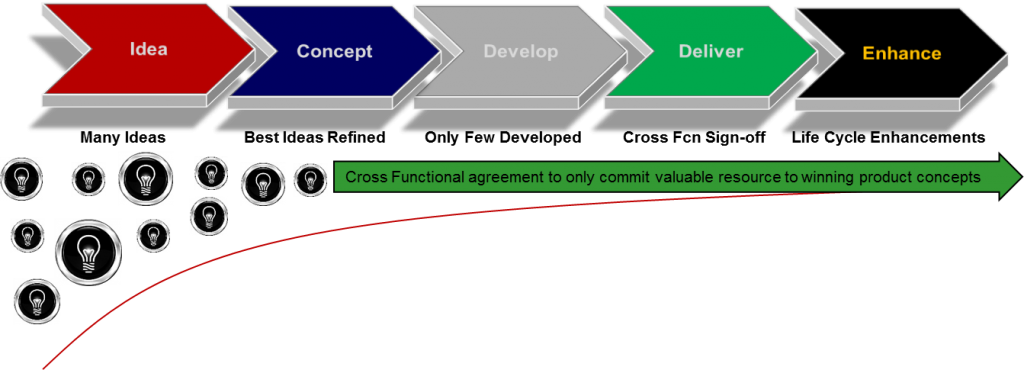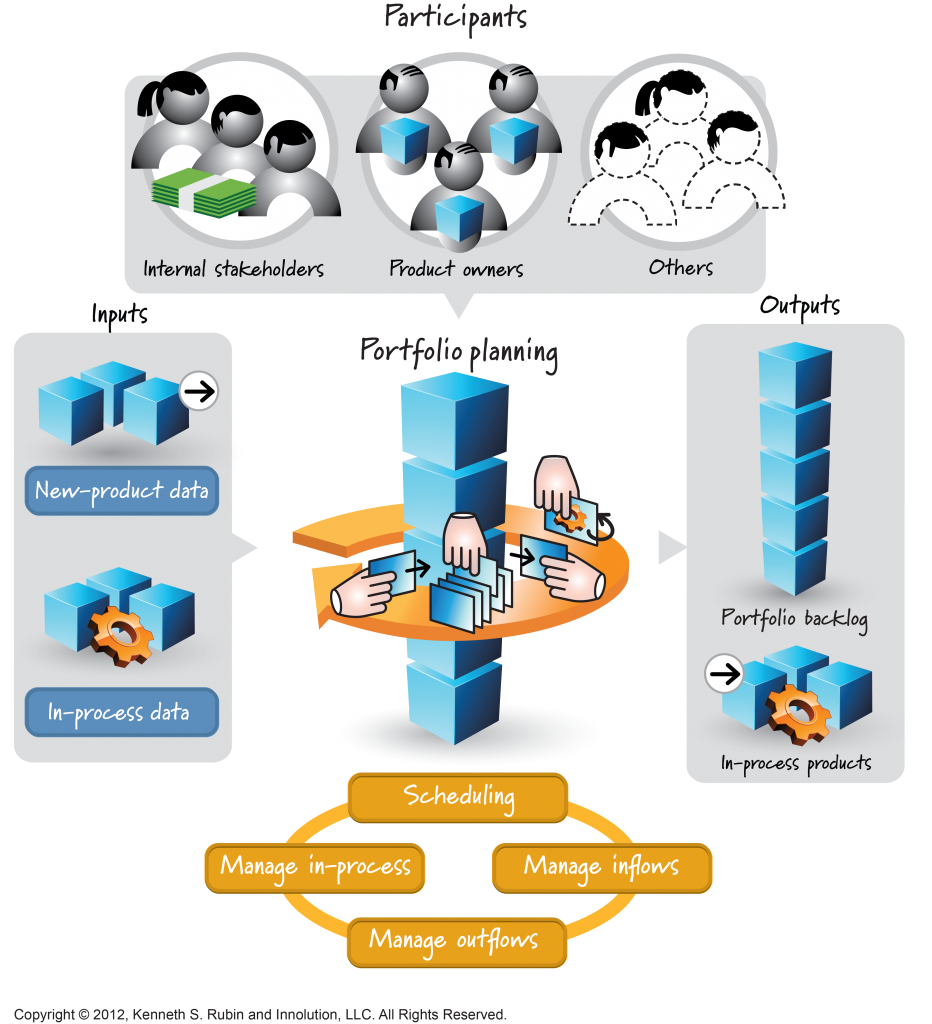
Right sized processes are essential to the product planning / product management disciplines as well as to engineering execution activities. While there are many organizational tools and processes needed in Product Development and New Product Introduction (NPI), I will outline several of the key ones here.
From my experience, NPI processes that empower cross functional teams, mentored and supported by senior management, are the most effective. Cross functional teams, nominally led by product management, create new product proposals and drive the execution of programs with the support of functional leaders in engineering, operations, sales and marketing, etc. Senior management, as a Program Approval Committee (or PAC), approves, redirects or rejects team proposals, and provides mentoring throughout the process to optimize business results. This approach empowers talented employees, who are closest to the work, to develop new product proposals and implementation plans, and it facilitates a close dialogue with executive leadership. This kind of empowering process – with the right rules of engagement – creates a culture of ownership, innovation and operational excellence.
While the bulk of NPI development will be done by engineering and product management, Core Team participation by the appropriate functions such as sales, marketing and operations is essential to the NPI process. Functional leaders should assign representatives to the Core Teams that can truly speak for their functional area and drive NPI execution. Functional leaders must also fully support the Core Teams by mentoring, coaching and guiding them through NPI realization. With a fully engaged and healthy team, marketing differentiation is naturally included in NPI decision making, the sales team helps the HQ team gain a better understanding of customer needs and wants, sales objectives for new programs are never a surprise, and manufacturing is engaged early to ensure best in class costs, supply chain optimization, quality and on time product launch! Normally, given the nature of these teams, Product Managers are the best leaders for Core Teams. However, I repeat, it is essential that functional management fully support the operation of the teams, and mentor, coach and groom Core Team members, guiding them to continuous improvement and operational excellence.
The Product Approval Committee (PAC) is made up of cross functional leaders who, depending on the size of the organization, should be at the VP or Director level. The PAC should be led by the CEO, COO or Division GM and has the responsibility of guiding business strategy from an NPI perspective. The PAC reviews the Core Team’s NPI proposals based on that strategy and approves, re-directs or repurposes them, while coaching and mentoring the Core Team to build up its performance.
To tie executive leadership (the PAC) and the Core Teams together into an empowering structure for execution, I recommend what is known in the industry as a “Gate Process”. As Gate Processes can be referenced easily with a Google lookup, I will not go into much detail here, except to say that the Gate Process should be right-sized to the organization using it. When optimized for the business, the Gate Process can provide clear guidelines for teams on what needs to be accomplished at different stages of program development, leading them through an efficient and successful process of conceptualization, design, test, launch and release of a product or service. With a tuned and right-sized set of gate requirements, NPI execution can be much more efficient given the clear guidelines and expectations. Optimally, at each development gate, the Core Team provides clear status for the prior phase of the program and the outlook and opportunity for the program going forward. The PAC provides coaching and guidance and ultimately approves, re-directs, or kills, the program depending on its status, execution, and competitive outlook. Aside from creating a good feedback loop between the Core Team and business leadership, one important objective of the Gate Process is to fully validate the value of a program (during Concept and Validation phases) before funding a very expensive product development phase. The idea is that many programs can be proposed, but only the best should be funded and developed. Empowering Core Teams to drive such a Gate Process – with timely and effective engagement with business leadership – is a great way to manage execution, to guarantee continuous improvement and to ensure that NPI efforts are focused on the right priorities.
As an extension to this NPI Gate Process, the executive team, product management and other product development leadership should regularly review changing business conditions, modifications to strategy and adjustments in NPI prioritization. These reviews will provide regularly updated guidance to the directions and execution of the core teams.
 One note to highlight here: I am a strong advocate of Agile development processes and a Lean Startup approach to build, measure, learn and refine in execution. But, I do not believe this is at odds with Gate Processes. In practice, a Gate Process is very important to qualifying investments in new products, as it requires detailed market analysis, business cases, cost estimates, timelines, etc. It is not appropriate to manage every small release through a full gate process – this is way too cumbersome. The full gate process is well suited for oversight and ongoing visibility of costly new programs and system level projects, but all stakeholders must understand the need for agility and course corrections in the face of learning and dynamic markets. Agile Development and Agile LifeCycle Management are background engine for execution of programs funded via the Gate Process. As such, the two processes are very complementary and compatible.
One note to highlight here: I am a strong advocate of Agile development processes and a Lean Startup approach to build, measure, learn and refine in execution. But, I do not believe this is at odds with Gate Processes. In practice, a Gate Process is very important to qualifying investments in new products, as it requires detailed market analysis, business cases, cost estimates, timelines, etc. It is not appropriate to manage every small release through a full gate process – this is way too cumbersome. The full gate process is well suited for oversight and ongoing visibility of costly new programs and system level projects, but all stakeholders must understand the need for agility and course corrections in the face of learning and dynamic markets. Agile Development and Agile LifeCycle Management are background engine for execution of programs funded via the Gate Process. As such, the two processes are very complementary and compatible.
